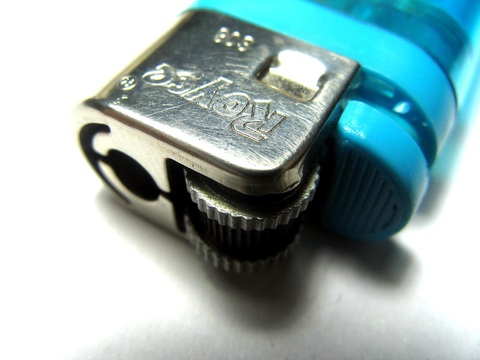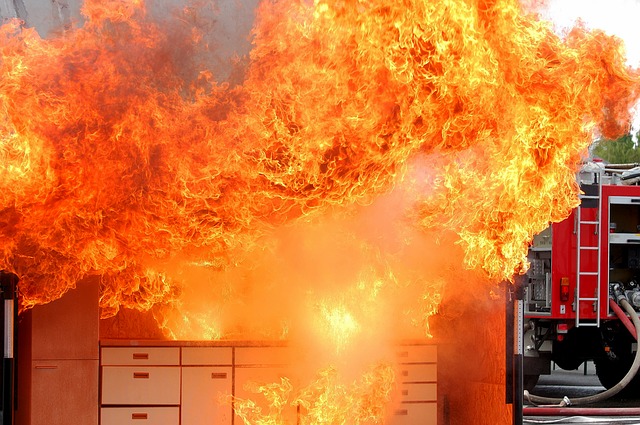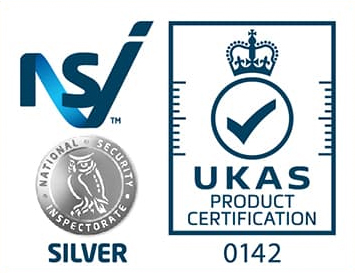Did you know that there are six different types of fire? Did you know that they all have different intensities and all need to be approached in different ways? In a previous blog post, we went through what type of fire extinguisher would be best for your property; today, we are going to go more in depth about the different types of fire.
Different Types Of Fire
Fires can be classed as A, B, C, D, Electrical or K. There a different methods to tackling each of the different types of fire, all with different extinguishers; what might work for extinguishing one type, might make another one even worse. It’s important to educate yourself on all of the different types and how you should approach them, particularly if you’re running a business and are in charge of the safety of many employees and visitors.
Class A Fires
Fires which would come under Class A are caused by ordinary combustibles. They’re the most common of the different types of fire and are caused by the ignition of materials such as textiles (e.g. cloth), paper, wood, rubber and certain plastics. As long as there is a supply of heat, oxygen and fuel, these fires will continue to burn; if one of these is taken away, the fire will not be able to continue burning. Out of all the fires, Class A are the easiest to extinguish. By putting water on the fire, you’re taking away the supply of heat which is something it needs to continue burning; this is why water based and foam extinguishers are suitable for putting out these fires.
Class B Fires
Class B fires are caused by the ignition of flammable liquids. Flammable liquids are any liquids that have an ignition temperature of less than 100℃ and have a low flashpoint, meaning they burn very easily. A few examples of flammable liquids are petrol, alcohol, solvents and paints. If exposed to a spark or naked flame, these liquids will ignite and can be very dangerous as they can spread quickly due to the amount of heat they give off. They also often produce a thick, black smoke which is toxic. It’s important to not try and extinguish Class B fires with water as this will make them spread even faster; a foam extinguisher is best suited for these types of fire.
Class C Fires
Fires caused by the ignition of flammable gases come under Class C. Flammable gases include butane, propane and methane. If these gases ignite, they have a potential to create an extremely dangerous explosion and can be ignited by air which is why they have to be stored in secure, sealed containers. Trying to extinguish these types of fire is dangerous and should only be done if you know exactly what to do. You must begin by isolating the gas supply. Dry powder extinguishers are best suited for Class C fires.
Class D Fires
Class D fires are caused by the burning and ignition of metals. As metal is a good conductor of heat, it takes a lot of heat to be able to ignite it. However, powdered metals and metal shavings can be ignited a lot easier and therefore it’s important to be cautious of these. Alkali metals can burn when they are exposed to air or water and therefore trying to tackle them with water or foam extinguishers will only make the fire worse. A few examples of alkali metals are potassium, magnesium, aluminium & sodium. There are specialist powder extinguishers for these types of fire, however sometimes it can be better to leave it to burn itself out as lots of ash will be produced which will starve the supply of oxygen.
Electrical Fires
Electrical fires are not technically a class of fire, however it is really important to know about them and how to tackle them. They’re caused by faulty equipment/appliances, damaged wiring, short circuits and overloaded switchboards. The best way to tackle an electrical fire is to isolate the supply of electricity and use a carbon dioxide/dry powder extinguisher. Never go in with a water or foam extinguisher as water and foam have the capability to conduct electricity and would therefore make the situation worse.
Class K Fires (Also Known As Class F)
Class K fires are kitchen fires which are caused by the ignition of cooking oils or fats. They can occur in homes, business properties or professional kitchens and can be extremely dangerous. Water will not work at all with Class K fires; it will make it spread and produces a risk of explosion. We recommend calling in professionals to tackle any type of fire, but specifically these types of fire due to the danger they hold. Specific extinguishers have been designed for Class K fires which contain a formula that cools the fire and seals the surface to prevent it from reigniting.
Contact Matrix Fire & Security
It’s important to think about what types of fire your property holds the risk of to ensure that you are fully equipped with the correct types of extinguishers. If you don’t have the full knowledge to tackle a fire yourself, always call in a professional as you do not want to put yours or anyone else’s life in danger. To find out more about how you can protect your property against different types of fire and what fire extinguishers you need, get in touch with the team at Matrix Fire & Security. Give us a call on 01296 614440 or fill out our short contact form on our website and a member of the team will be in touch as soon as possible.





